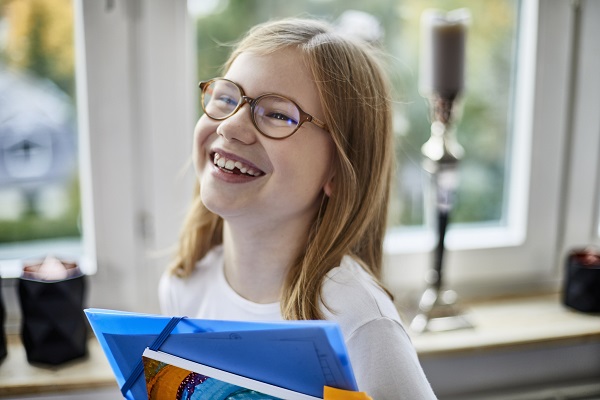Have your kids had an eye check?

How often should I get my child's eyes checked?
Eye problems in kids can be hard to spot. That’s why it’s recommended you get their eyes checked every two years.
Your child’s eyes are their windows on the world and in those early years, around 80% of everything they learn comes from what they see. But did you know it’s estimated that around 5 - 10% of preschool aged children have undetected vision problems? It’s common for a child not to complain about their vision because they don’t necessarily know what they are seeing isn’t clear. Vision problems also don’t often have any obvious physical symptoms so they can be easy to miss for parents. That’s why optometrists recommend you test their eyes every two years.
Signs you can look out for in toddlers and pre-schoolers include:
- regularly holding things up close to their face
- rubbing their eyes a lot
- seeing better during the day
- saying their eyes are tired or tire from looking at objects up close
- appearing to have eyes looking in different directions
- falling or tripping over a lot.
What to expect at your child's first eye check
Your optometrist will adapt your child’s eye test according to their age. They’ll usually use cards featuring symbols, pictures, numbers and letters (depending on how well your child can read) to test their vision, ability to focus and how well they see depth and colour. They’ll also use tools and devices to check there are no signs of other eye concerns.
“I cannot encourage parents more to book their children in for an eye health check before they start school,” says Specsaver’s Optometrist Janet McDonald. “If vision defects are detected early, treatment can mean that your child has the best start possible^.”
Common eye conditions in children
The best treatment for eye problems in children is to detect them early. That’s why it’s so important to have their eyes tested once every 2 years^.
Common eye problems found in young people include Hyperopia (long sightedness), Myopia (short sightedness) and Astigmatism (distorted vision). These conditions are usually easy to spot and treat by your optometrist.
You may have heard of Lazy Eye (Amblyopia) which happens when there’s decreased vision in one or both eyes. Again, if detected early this condition may be treated by your optometrist.
Strabismus (Turned Eye) occurs when the two eyes aren’t working together. If left undetected, this condition can lead to problems later in life but may be corrected if caught early enough.
“The beauty of testing children’s eyes is that the eyes are still developing and continue to do so until about the age of eight” says Janet McDonald. “If I find that the eyes don’t move together, for example, there are a number of exercises and options that I can prescribe that can fix problems while the eyes are still developing.”
We're here to help
A kid’s eye check at Specsavers, our Member’s Choice Advantage provider, takes around 30 minutes to complete. Eye health checks are also bulk billed by Medicare once every three years. Out-of-pocket costs may apply if your child has had an eye check within the past three years.
If your child needs glasses, they start at $39. Don’t forget, if you have Family or Single Parent cover that includes Extras you can get up to 100% back on optical up to your annual limits+. Plus, you’ll earn 5 Live Better points for every $1 spent on prescription optical goods at Specsavers~.